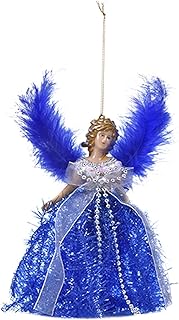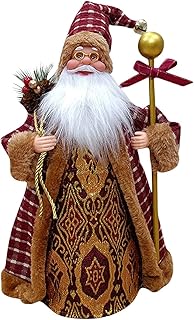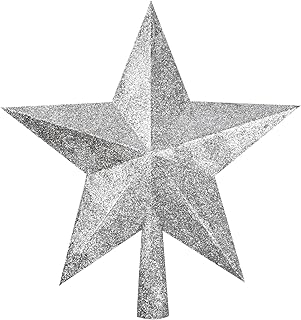From Angels to Stars: Exploring the Symbolism and History Behind Popular Christmas Tree Toppers
Throughout the festive season, the Christmas tree stands as the centrepiece of many homes. Adorned with sparkling lights, shimmering baubles, and delicate garlands, it is the crowning glory that captures everyone’s attention: the tree topper. For centuries, families have carefully selected the perfect adornment to claim the apex of their Christmas tree. From ethereal angels to radiant stars, these ornaments are more than mere decorations; they are deeply rooted in culture, tradition, history, and symbolism. To truly appreciate the presence of these cherished icons, one must delve into the origins and evolution of Christmas tree toppers, discover how they reflect both personal beliefs and societal trends, and understand the meaning they hold at the heart of holiday celebrations.
The Early Beginnings of the Christmas Tree and Its Decorations
The practice of bringing greenery indoors during midwinter pre-dates Christianity. Early civilisations, such as the ancient Egyptians, Romans, and Druids, all incorporated evergreen boughs into their pagan festivals to celebrate life and rebirth through the darkest days. However, the modern Christmas tree tradition as we know it is broadly believed to have originated in 16th century Germany, where devout Christians brought decorated trees into their homes. Martin Luther, the Protestant reformer, is commonly credited with adding twinkling candles to a tree, inspired, as legend tells, by the sight of stars glistening amidst evergreen trees on a winter night.
As the custom spread across Europe and took root in Britain during the Victorian era, thanks to Queen Victoria and Prince Albert's influence, the Christmas tree quickly became a household essential for those celebrating Christmas. Early decorations were exceedingly modest, consisting mainly of edibles such as nuts, apples, and gingerbread, but soon these were joined by handmade ornaments, paper garlands, and, most notably, ornamental toppers. These toppers, perched at the very summit of the tree, came to represent the crowning jewel of festive decoration.
The Angel: Messenger of Glad Tidings
Amongst all tree toppers, the Christmas angel may be the most evocative and enduring symbol. Rooted in Christian tradition, the angel embodies the divine messengers who played essential roles in the Nativity story. According to the biblical narrative, angels appeared to the Virgin Mary, conveying news of the forthcoming birth, and later heralded the arrival of the Christ child to a group of humble shepherds, proclaiming “peace on Earth, goodwill toward men.”
The placement of an angel atop the tree symbolises not just the messengers themselves but the heavenly presence watching over the household. The angelic figure, often portrayed with open arms, flowing robes, and trumpets, represents hope, joy, and the promise of salvation brought to mankind through Christmas. Many families also view the angel as a guardian, a celestial being keeping watch over loved ones during the festive season and beyond.
Victorians, with their love of symbolism and elaborate decor, popularised angel tree toppers in the 19th century. Early examples were made from paper, lace, feathers, and bits of fabric, often crafted at home. Later, glassblowers and artisans in Germany and Eastern Europe began producing exquisite figurines that quickly became treasured heirlooms, passed down through generations. These toppers became central features in many families’ holiday celebrations, their significance enduring even as the styles and trends of Christmas tree decoration evolved through the years.
The Star: Guiding Light of the Nativity
Rivalling the angel in popularity and spiritual resonance is the Christmas star, another deeply meaningful tree topper with origins stretching back to the heart of the Nativity story. The star is emblematic of the Star of Bethlehem, which, according to Biblical accounts, appeared in the night sky to guide the Magi—often referred to as the Three Wise Men or Kings—to the birthplace of Jesus.
For those who choose the star as their prized finale, it symbolises guidance, inspiration, and the light of hope. The star stands as a reminder of the journey undertaken by the Wise Men, representing a light in the darkness and pointing the way to something sacred. The five-pointed or eight-pointed star forms are most common, but some families choose elaborate interpretations, with rays glittering in every direction, often finished with shimmering foil, glass, or crystals to reflect the inner lights of the tree beneath.
While the angel speaks to divine proclamation, the star tells of a journey and divine direction. It is especially poignant for those who see Christmas as a time to reflect on their own paths in life, to seek guidance, or to celebrate moments of clarity and illumination. In secular homes, the star is often viewed as a universal sign of hope and wonder—an uplifting symbol that transcends specific religious boundaries, making it a popular choice for households of diverse backgrounds.
Other Traditional Christmas Tree Toppers: Crosses, Finials, and Crowns
Beyond angels and stars, the traditions surrounding Christmas tree toppers have embraced a wider range of symbols. In some Christian households, a cross, symbolising the central tenet of their faith, is chosen to top the tree. Though less common than stars or angels, the cross is a powerful reminder of the purpose of Jesus’s birth and the promise of redemption through his later crucifixion and resurrection.
Decorative finials, inspired by classic European glassblowing techniques, enjoyed immense popularity across the 19th and 20th centuries. These elongated, often teardrop-shaped or onion-shaped ornaments brought an elegant, sometimes opulent, flourish to the tree’s summit. Finials commonly featured hand-painted designs, gilding, or even hand-applied mercury glass, adding a unique touch without overt religious symbolism.
For those with a penchant for regal motifs, crowns have occasionally taken the prime spot, representing both the kingship of Christ and the magisterial feeling of the holiday. Crown toppers, often extravagantly adorned, call to mind the tradition of European royalty and the notion of Christmas as a season of splendour and abundance.
People Also Look For:
- Aodaer Gold Glitter Star Tree Topper 4 Inch Mini Plastic Glittered Christmas Topper Shatterproof Christmas Star Treetop Sparkle Xm...
- Ksopsdey Cartoon Character Franchise 26pcs Multicolored Cake Toppers for Birthday, Baby Shower, Christmas, Anniversary
- Gold Easter Tree Toppers Angel, Costume Doll with White Feather and Candy Cane, Easter Decoratives Ornament for Tree Top Desktop L...
- Kukifun 7Pcs Rabbit Figures Cake Topper,Bunny Animal Toys Fairy Garden Mini Figurines Playset for Christmas Easter Kids Birthday P...
- Christmas Angel Tree Toppers, 29x30cm White Angel Treetop, Light Up Fairy Treetop Pendant
Cultural Variations and Global Influences
The choice of tree topper can often reflect a family’s heritage and personal history as much as it does religious beliefs. In many Eastern European countries, for example, intricate glass finials are favoured, a testament to the region’s rich tradition of glass ornament production. In Scandinavian countries, simple straw ornaments or stylised stars are preferred, echoing a minimalist approach and a deep connection to natural materials.
In Ireland and parts of the United Kingdom, a holly sprig or a rosette might sometimes be used, invoking the region’s pre-Christian symbolism and festive folklore. Meanwhile, in parts of Italy, figures such as Befana, the kindly witch who delivers gifts, might make a rare appearance atop the tree, amplifying the diversity found in European Christmas traditions.
The increasing multiculturalism of the modern world has encouraged a further expansion of what is considered appropriate or meaningful as a tree topper. In contemporary Britain and Commonwealth countries, you might just as easily find a Union Jack, a favourite animal, or other non-traditional objects gracing the top of a tree as a means of self-expression or humorous commentary.
Changes in Material, Craftsmanship, and Style Through the Centuries
Much like the ornaments hung on the branches, the tree topper has experienced myriad stylistic and material changes over the centuries. The earliest toppers were homemade, fashioned from whatever craft materials were at hand, including lace, cones, wood, and straw. As means and manufacturing techniques improved during the Industrial Revolution, store-bought options began to proliferate.
In the late 19th and early 20th centuries, German and Polish glassblowers produced dazzling hand-blown glass ornaments, including delicate angels, glowing stars, and lavish finials. These luxurious designs, often finished with silvering, Mercury glass, or hand-painted touches, became symbols of status as much as faith or celebration. The exportation of these ornaments to Britain and North America ensured the tradition’s spread.
In post-war Britain, changes in home décor trends and the rise of mass production ushered in new designs, with plastic, metal, and later, lightweight electrical options transforming the way toppers were made and displayed. The electrification of the Christmas tree allowed for illuminated toppers, making the stars positively glow and angels shimmer, while new materials allowed for creative and personalised options.
Today, consumers enjoy a virtually limitless array of choices, from retro vintage toppers reclaimed from charity shops to contemporary, avant-garde pieces custom-ordered online. There is renewed interest in eco-friendly and sustainable options, with artisans crafting toppers from recycled glass, felt, or ethically sourced wood. The handmade movement has also rejuvenated interest in craft and do-it-yourself toppers, reflecting a desire for personalisation and authenticity in our holiday celebrations.
Sentimentality and the Tree Topper
More than almost any other Christmas tree adornment, the tree topper holds immense sentimental value. It is not uncommon for families to have a single topper that is lovingly unpacked each year, a cherished object from a parent or grandparent, carrying with it memories of many Christmases past. For others, the act of choosing a new topper can mark important milestones—a first Christmas in a new home, the arrival of a child, or the blending of holiday customs from different backgrounds.
Family lore often circulates around the tree topper. Accounts of how it was acquired, mishaps during its placement, or the person entrusted each year with the honoured duty of securing it to the top of the tree become an essential part of Christmas storytelling and tradition. For many, the topper serves as a microcosm of the holiday itself: a time for remembering the past, taking joy in the present, and looking forward to the future.
Modern Interpretations: Personal Taste and Artistic Expression
In the 21st century, the range of Christmas tree toppers on offer has expanded enormously, reflecting the pluralistic and creative spirit of the current age. While many households still favour the traditional angel or star, an increasing emphasis on personal taste and artistic expression has led to a proliferation of alternative toppers.
For some, the tree topper is an opportunity for humour or whimsy, with options ranging from favourite cartoon characters to pop culture icons. Others view it as a chance to showcase a treasured family heirloom, a handmade craft by a child, or a symbol of personal significance that may have little to do with Christmas in the traditional sense.
Technological advancements have contributed to this trend. Today’s toppers might be battery-operated and colour-changing, incorporate fibre optics, or even include interactive elements that connect to a home’s smart devices. Digital technology allows for personalisation, enabling families to create custom toppers with photos or messages, further entwining family memory with holiday celebration.
The minimalist movement has also made its mark on tree toppers, with simple geometric shapes, natural wood, or even a single striking flower head claiming pride of place. At the other end of the spectrum, lovers of maximalism revel in oversized, glittering, and even bespoke toppers that turn the tree into a veritable work of modern art.
Whether chosen for aesthetics, humour, or heritage, these toppers represent the evolving meaning of Christmas. They show how ancient traditions adapt and thrive in new cultural landscapes, speaking to both the universality and the individuality of the festive season.
Special Toppers: Commemorations and Heritage
Some families choose tree toppers crafted for a specific purpose or to commemorate a significant occasion. Memorial toppers are lovingly made or purchased to remember a departed loved one; these may take the form of a white dove, a picture frame, or even a simple star illuminated in blue. For military families, it is not uncommon to see a small Union Jack or regimental standard taking pride of place as a mark of remembrance and respect.
Other toppers reflect heritage and ancestral pride. Scottish households might incorporate a tartan ribbon or a miniature St Andrew’s Cross, while Welsh families may opt for a red dragon motif. Families hailing from further afield bring their own tops to the tradition, fusing British customs with their own and enriching the festive tapestry.
In more cosmopolitan communities, international and interfaith marriages inspire creative hybrids, resulting in toppers that blend Christian, Jewish, and other faith-based symbols. In all cases, this diversity strengthens and deepens the meaning woven through both the holiday itself and the adornment at its centre.
Tree Topper Traditions Across the United Kingdom
Within the United Kingdom, Christmas remains a time of rich tradition and local specificity, and tree toppers demonstrate this beautifully. In England, the spiritual and royal associations with both angels and stars have remained strong, though family heirlooms and vintage glass finials from the Victorian and Edwardian eras are much prized. Increasingly, families are indulging in modern reinterpretations or custom-made toppers to reflect their changing identities.
In Scotland, alongside angels and stars, thistles or even a small Saltire may appear, especially in households with a strong sense of Scottish identity. In Wales, the iconic red dragon or a daffodil may take precedence. Already noted, Northern Ireland combines both Irish and British symbols in varied and meaningful ways.
Across the UK, the rise of charity shops and vintage fairs has spurred renewed interest in restoring and reusing toppers from decades past. Many families relish the nostalgia invoked by 1970s plastic stars or the opulence of a 1950s glass angel. The sustainability movement and a growing desire to reduce waste have further invigorated this trend, allowing beloved ornaments to continue sparking joy for generations.
The Ritual of Placement: A Family Affair
Of all the rituals that comprise the decorating of the Christmas tree, few are as significant or filled with anticipation as placing the topper. Whether the task falls to the shortest or the tallest family member, is decided by drawing lots, or is a right reserved for a particular person, it is invariably imbued with importance.
Stories abound of family mishaps, from unstable ladders to toppling trees, lending an air of gentle chaos to the occasion. Yet, at its heart, this ritual is about completion and unity: the moment when the work of decorating, often undertaken collectively and animated by laughter and festive music, is drawn to its final flourish.
In some homes, a special phrase is spoken or a toast is raised as the topper is secured, anchoring the moment in the family memory. Children, wide-eyed and excited, look on as their parent or grandparent fulfils the annual rite, ensuring the tradition—and its meaning—are passed on.
The Emotional Resonance and Lasting Legacy
Over time, the Christmas tree topper becomes more than just a decoration. It absorbs the stories, laughter, and sometimes tears of a family’s shared history. Lovingly restored after accidental falls or haphazard storage, these toppers become talismans of joy and remembrance. Their annual return evokes nostalgia for holidays past and anticipation for those to come.
Children brought up with a particular star or angel at the heart of their Christmases are likely to continue the tradition as adults, their own trees topped with something familiar or an inspired variation. The gifts of memory and meaning link generations, keeping alive the spirit of the season long after the lights are packed away.
Conclusion
Across the centuries, Christmas tree toppers have transformed from humble handmade creations to elaborate centrepieces, from deeply religious icons to symbols of personal identity. Yet, despite changes in material, style, and cultural context, their fundamental role remains unchanged: to crown the Christmas tree with a marker of hope, faith, and family. In every angel, star, or alternative topper, there lies a story unique to the household it graces—one built on layers of tradition, belief, memory, and meaning.
As you unfurl the lights, unpack the baubles, and select the perfect tree for this year’s celebration, take a moment to reflect on the symbolism and legacy contained in your topper. Whether it is a radiant star, a delicate angel, a whimsical custom design, or a cherished family heirloom, it is not merely the finishing touch, but a beacon that quietly lights your home with the true spirit of Christmas.



